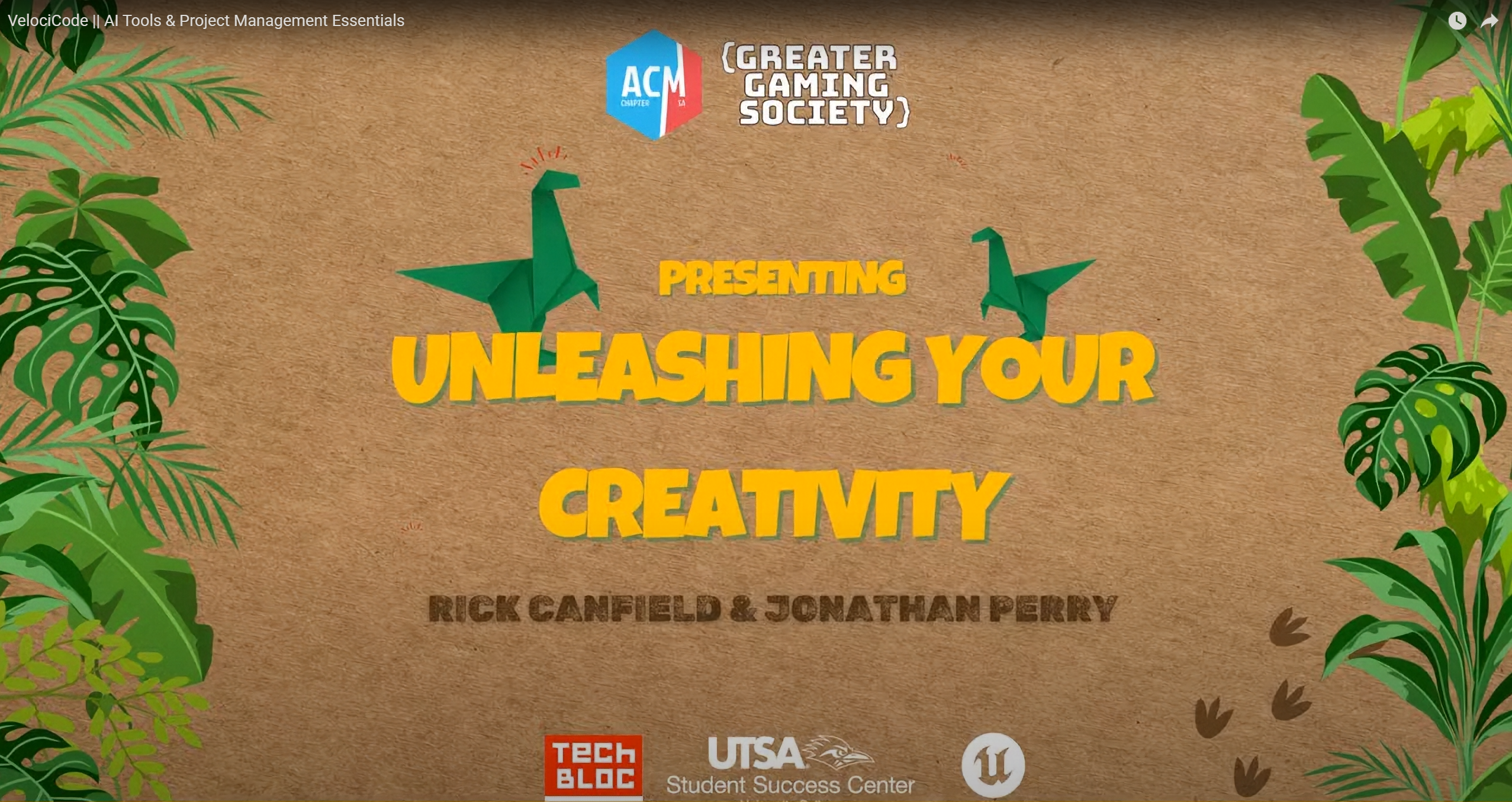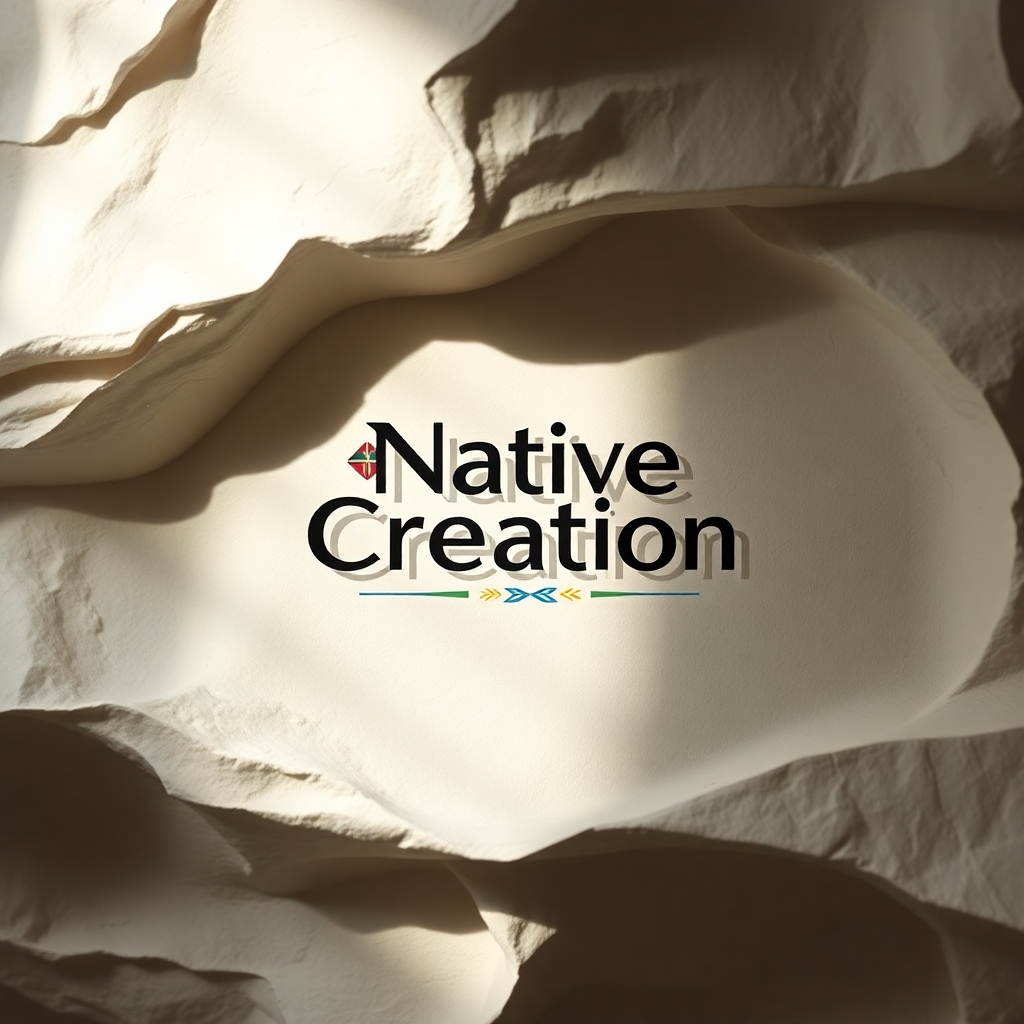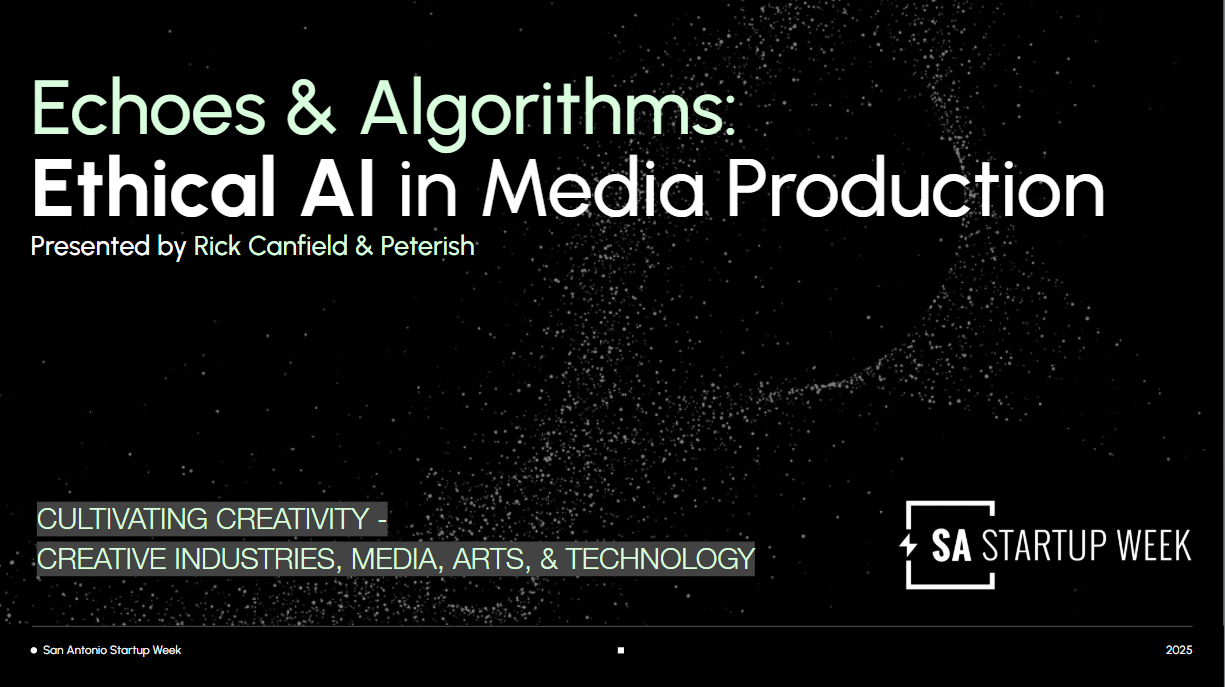Creativity and AI Ethics: An Essential Toolkit for Game Dev Success
The modern game developer isn’t just an artist or a coder; they are a miniature studio, constantly balancing ambitious creativity with brutal deadlines. The latest VelociCode workshop session was led by myself and veteran game developer Jonathan Perry (Mass Effect / Dragon Age) of the San Antonio Unreal Engine Chapter.
The livestream was part of Velocicode, a month-long game jam hosted by Zaquariah Holland from the San Antonio ACM Chapter and Ansley Partosa from The Greater Gaming Society of San Antonio. It was further sponsored by Tech Bloc, the UTSA Student Success Center, and the Boeing Center at Tech Port.
We delivered a power-packed two-part workshop on the two things every creator needs now: Ethical AI empowerment and rock-solid project management.
If you’re building in Unreal Engine, Unity, or any corner of the metaverse, here are the essential takeaways from this transformative livestream:
Part 1: Unleash Your Creativity with Ethical AI 🎨
In the first 30 minutes of our workshop, we focused on how generative AI is shifting content creation from a labor-intensive process to a rapid, iterative workflow—all while stressing the critical importance of ethical sourcing.
(Slideshow link: Unleash Your Creativity)
The AI Toolkit for Rapid Prototyping:
Forget spending weeks on generic assets. We demonstrated how three major AI tools can quickly generate high-quality starting points:
- Gemini (The Brain): Use Google’s multimodal model to streamline your creative decision-making. Instead of manually searching for code snippets or design concepts, use Gemini to instantly generate Blueprint logic suggestions, create initial world lore, or even help troubleshoot complex C++ errors within your Unreal project.
- Leonardo AI & Meshy (The Artists): These generative AI platforms turn text prompts into visual and 3D assets. Leonardo AI can rapidly create unique texture maps and concept art, providing a massive jumpstart to the visual design process. Meshy was highlighted for its ability to quickly convert 2D images or concepts into usable 3D models, making complex prop creation a matter of minutes, not hours.
- FAB Marketplace Integration: The key to an ethical and efficient workflow is blending generative output with licensed assets. The session gave a quick tour of the FAB Marketplace (formerly Unreal Marketplace), showing how to filter for free, high-quality, pre-licensed environments and assets that can be easily dropped into UE5 and customized with AI-generated textures.
The Ethical Mandate: Transparency is Key
To wrap up the first half, the core message of the session was not just how to use AI, but how to use it responsibly. Developers must be mindful of copyright and licensing. Using pre-licensed assets from the FAB Marketplace and clearly disclosing AI use helps creators avoid legal pitfalls and builds trust with the savvy SA Unreal Discord community (and the wider player base).
Part 2: Essential Project Management for Game Dev Success ⏱️
The second half of our workshop shifted focus from creative output to operational efficiency. We provided a no-nonsense guide to managing the chaotic reality of game development.
(Slideshow link: Level Up Your Workflow)
The Triple-Threat Tool Stack (and How to Use Them):
The session focused on leveraging free tools that replace the need for complex, expensive enterprise software:
- Asana (The Task Master): Use Asana for task decomposition—the process of breaking large, intimidating features (like “Design Quest System”) into small, measurable, time-bound subtasks (“Draft dialogue script for NPC-A,” “Implement 5-step animation sequence”). This prevents feature creep and makes progress tangible.
- Miro (The Vision Board): Miro, the virtual whiteboard, is essential for visualizing the entire project scope and conducting remote planning sessions. It’s perfect for creating a virtual Kanban board, running sticky-note brainstorming sessions, and establishing the game’s initial flowcharts and mood boards.
- Obsidian (The Documentation Vault): This markdown-based note-taking app is vital for managing the endless documentation (design docs, lore bibles, technical specifications) that defines a game. Its robust linking capabilities ensure that every asset, line of code, and design decision is instantly traceable, eliminating the “knowledge silo” problem that derails many small teams.
Level Up Your Workflow: Practical Strategies
Here we introduced core strategies for managing a rapid development project.
- Agile for Indies: Implement quick, daily stand-ups (5-10 minutes) focused solely on three questions: What did you do yesterday? What will you do today? What roadblocks are stopping you? This maintains momentum and flags issues instantly.
- Scoping for Sanity: Always prioritize features into Must-Have, Should-Have, and Could-Have (MoSCoW) categories. This prevents the ambitious “Wishlist” items from derailing the core game and protects the team from burnout.
- Communicate Up and Down: Producers and team leads must not only communicate tasks but also listen for those crucial “blockers” that prevent artists or programmers from working. Tools like Asana make these roadblocks visible to the entire team.
Overall, our session drove home a powerful idea: mastering the technical artistry of game development is only half the battle. True success in the metaverse era belongs to the creators who can master both the AI paintbrush and the project timeline.
- Echoes & Algorithms: Ethical AI in Media Production - October 28, 2025
- Creativity and AI Ethics: An Essential Toolkit for Game Dev Success - August 1, 2025
- Echoes on the Canyon Walls: Why the Pecos Rock Art is North America’s Oldest Grand Media - May 1, 2025




